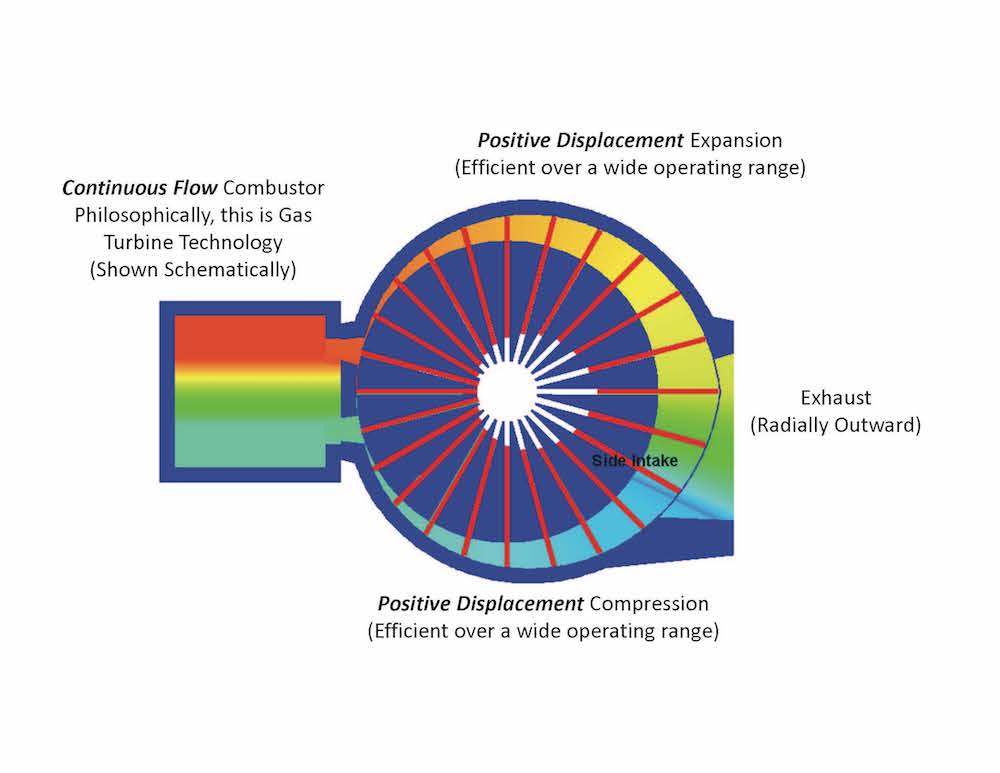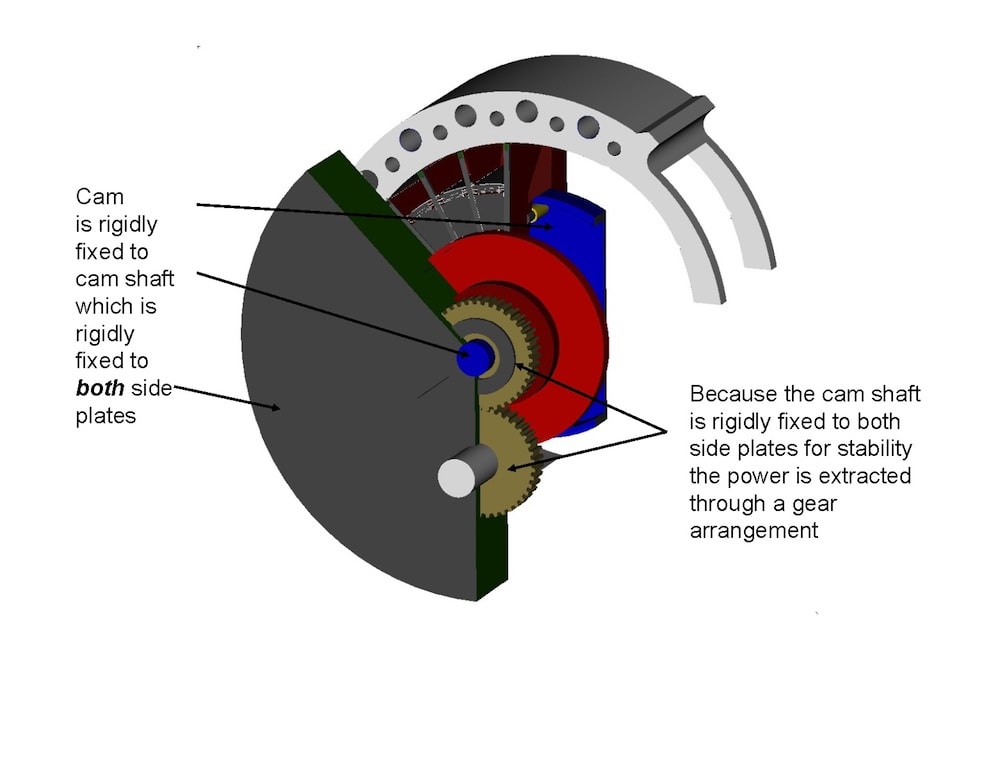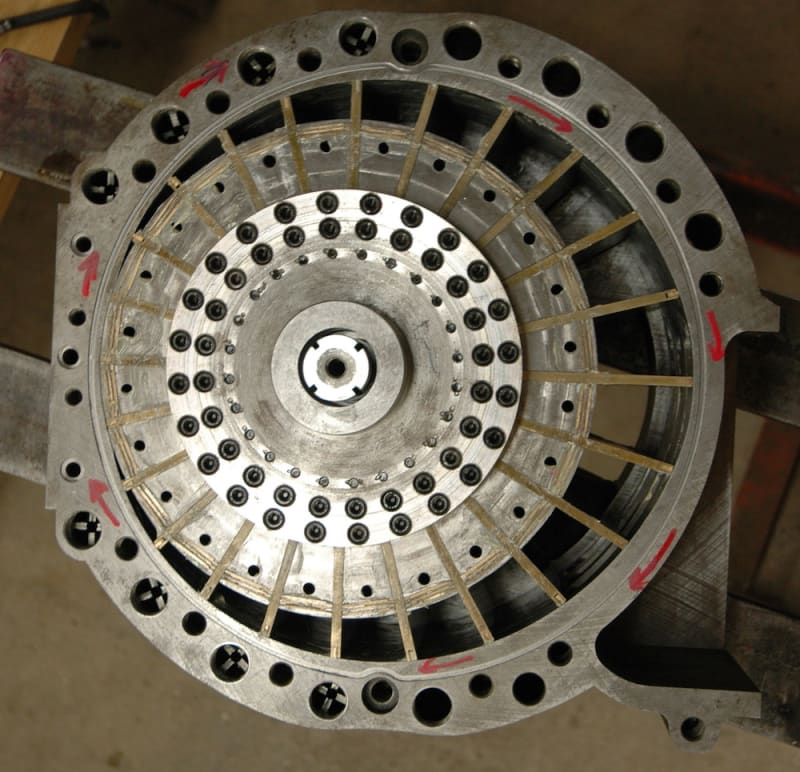This entry is based on a fundamentally new engine type. The continuous flow rotary vane engine represents a new paradigm in heat engine technology in that positive displacement compression and expansion processes are incorporated in a steady flow, continuous pressure gain combustion design.
Direct heat addition in a thermodynamic gas cycle is the basis for a myriad of engine types including the spark ignition class of engines, compression ignition engines, and continuous burn gas turbines. Spark ignition engines are nearly universally piston engines operating on the Otto cycle or a close derivative. A notable exception is the Wankel rotary engine. The performance of this entire class of engines is severely limited by compression ratio (auto ignition) and throttling requirements. The vast majority of compression ignition engines operate on a diesel cycle or a close derivative. These engines are hampered by a range of performance issues, most notably emissions issues and lower cycle efficiencies than would otherwise be possible with engines of comparable compression ratios. A novel exception to the diesel cycle in this class of engines is the homogeneous charge compression ignition (HCCI) engine with its own set of limitations including enormously difficult control related issues. Gas turbines operate on the Brayton cycle and are very efficient at or near their design operating load. At off-design, where many engines (vehicles most notably) spend most of their lives, gas turbine performance is abysmal because gas turbines depend on momentum based compression and expansion in the compressor and turbine. The positive displacement spark ignition and compression ignition avoid this Achilles heel by employing positive displacement compression and expansion processes but suffer their own difficulties from intermittent combustion related issues of various types.
The continuous flow rotary vane (CFRV) engine combines positive displacement with continuous combustion to achieve the best of the efficiency and performance advantages of piston engines and gas turbines. By employing continuous combustion coupled with positive displacement compression and expansion, the engine can operate unthrottled over a wide power demand range and the engine is highly versatile with regard to fuel selection. During the compression process the vanes seal against the inner rotor, the engine side plates and the outer cowl to produce individual sealed chambers whose volume is decreased as the engine rotates. This occurs with near equal effectiveness regardless of engine speed in the typical practical operating ranges for heat engines. The combustor is shown schematically only. Perhaps the most critical element of the success of the CFRV engine is the fact that the combustor can segregate the air stream, allow the combustion process to occur very efficiently at the full unthrottled operational combustor pressure and then allow the near stoichiometric exhaust products to mix with the remaining air stream before the expansion process occurs. The expansion process is essentially the reverse of the compression process and the patented architecture allows for the intake and exhaust process to occur near simultaneously, thereby enabling the operation of the entire thermodynamic cycle in a single rotation of the engine.
Like this entry?
-
About the Entrant
- Name:Roy Hartfield
- Type of entry:individual
- Software used for this entry:CAD
- Patent status:patented








